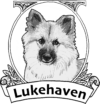Temperament & Physical Characteristics
The Icelandic Sheepdog is celebrated for a harmonious blend of vivacious spirit and enduring sturdiness. A true working spitz, it combines a friendly, people-oriented temperament with a physique built to thrive in challenging terrain and climates. Below, you’ll find an in-depth look at the breed’s signature personality traits, exercise and training needs, and defining physical features—so you can understand what living with an Icie really entails.
Temperament & Personality
Affectionate and Social. From puppyhood onward, Icelandic Sheepdogs form deep bonds with their families. They crave human interaction, following their favorite person from room to room and often greeting visitors with exuberant tail-wags and friendly barks. Their natural warmth makes them excellent with children, other household pets, and even strangers—while still retaining a healthy level of caution and alertness.
Vocal and Watchful. Bred to herd flocks in open pastures, Icies historically used their voice to control sheep and signal their humans. Today, you can expect a clear, cheerful bark whenever the doorbell rings or a deer crosses the yard. With early socialization and positive reinforcement, you can shape barking into a useful alert system rather than a nuisance.
Playful Intelligence. These dogs possess a quick wit and an eagerness to participate in games, puzzles, and learning new tricks. Their spirited curiosity means they thrive on mental challenges just as much as physical ones—so interactive toys, scent-work games, and agility courses can keep even a home-alone Icie happily occupied.
Courageous Yet Gentle. Despite their moderate size, Icelandic Sheepdogs are fearless. They’ll readily investigate unusual sounds, unfamiliar environments, or new animals. However, aggression is virtually unheard of; their protective instincts steer them toward barking and investigation rather than confrontation. A well-raised Icie displays a balanced blend of confidence, friendliness, and composure.
Energy Levels & Training
Moderate–High Activity Requirement. An adult Icie needs at least 60 minutes of focused exercise each day, ideally divided between brisk walks, off-leash play, or dog-sport sessions. Without sufficient outlets, their herding instincts can express themselves through excessive barking or chasing small animals.
Ideal Dog Sports Partner. Their combination of agility, intelligence, and eagerness to please makes Icelandic Sheepdogs natural contenders in sports such as agility trials, rally obedience, and herding tests. Many owners find that enrolling in a local dog-sport club not only keeps their Icie physically fit but also strengthens the human-dog bond.
Positive, Consistent Training. Harsh corrections are unnecessary—and counterproductive—with this sensitive yet determined breed. Training methods that emphasize rewards, praise, and playful engagement will yield the best results. Early socialization (exposure to a variety of people, places, and experiences) helps ensure that confident puppy grows into a stable adult.
Physical Traits & Build
Size & Proportions
- Height: Males ~18″ at the withers; females ~16.5″
- Weight: 20–30 lbs equally distributed for balance
- Outline: Slightly longer than tall (rectangular profile) to support agility and endurance
Distinct Spitz Features
- Ears: Erect, medium-sized, highly mobile—conveying emotion and focus.
- Eyes: Almond-shaped, dark brown (lighter permissible in dilute colors), exuding an intelligent, “smiling” expression.
- Tail: High-set, plumed, carried tightly curled over the back in a full ring; a hallmark of the breed.
Double Dewclaws: Uniquely among many breeds, Icelandic Sheepdogs carry double dewclaws on the hind legs—a trait rooted in their working heritage and one that is actually required by the AKC standard. These well-developed extra toes add traction on steep or slippery ground.
Coat Types & Color Variations
Double Coat Construction
- Undercoat: Thick, soft, insulating against cold.
- Outer Coat: Coarse and weather-resistant.
There are two recognized varieties:
- Short-Haired: Outer coat of medium length, lying close to the body.
- Long-Haired: Fuller outer coat forming a modest ruff, feathered legs, and a plume on the tail.
Color Palette & Markings.
- Primary Shades: Tan (cream to reddish-brown), chocolate brown, gray, or black.
- White Accents: Always present—commonly blaze on the face; collar or chest patch; socks; tail tip.
- Tricolor & Pied: Black base with tan points and white, or white base with colored patches.
One color must predominate; solid-white coats or saddle-type black markings on tan dogs are disqualifications under the breed standard.
Grooming & Maintenance
- Brushing: Weekly year-round; daily during heavy shedding (spring and fall) to manage the undercoat.
- Bathing: Only as needed—over-bathing can strip natural oils.
- Nail Care: Trim regularly to prevent splitting; double dewclaws require special attention.
- Dental & Ear Cleaning: Incorporate into the weekly routine to support overall health.
With consistent grooming, the Icelandic Sheepdog’s coat remains healthy, clean, and ready for whatever outdoor adventure you embark on together.
